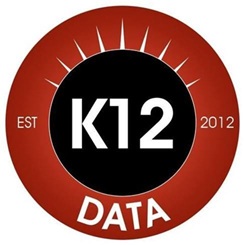In today’s digital era, building a robust and data-driven email list is an essential strategy for success in education-focused businesses. Whether you’re an edtech startup, an educational institution, or an online course provider, an effective email list connects you with your target audience, fosters meaningful relationships, and drives measurable results. This guide provides a comprehensive approach to creating a data-driven email list tailored for success in the education sector.
- Understand Your Target Audience
To create a valuable email list, start by clearly identifying your target audience. Consider the following:
- Demographics: Define the age group, geographic location, and educational level of your ideal audience.
- Interests and Pain Points: What educational goals do they have? Are they looking for professional certifications, student resources, or teaching tools?
- Behavioral Data: Study how your audience interacts with educational content online, such as webinar attendance, blog engagement, or course downloads.
By developing detailed buyer personas, you can segment your audience effectively and tailor your email campaigns to address their specific needs.
- Leverage High-Quality Lead Magnets
Lead magnets are incentives that encourage potential subscribers to share their email addresses. In the education sector, successful lead magnets often include:
- Free Resources: E-books, lesson plans, and study guides.
- Webinars and Workshops: Free live sessions on relevant topics like study tips or teaching strategies.
- Exclusive Access: Early-bird access to courses, free trials for learning platforms, or demo versions of educational software.
- Interactive Tools: Grade calculators, learning style quizzes, or career assessment tests.
Ensure that your lead magnet is relevant, valuable, and aligned with the needs of your audience to maximize conversions.
- Optimize Sign-Up Forms and Landing Pages
A user-friendly sign-up process is crucial for building a robust email list. Optimize your forms and landing pages by:
- Keeping Forms Simple: Limit the required fields to essential information, such as name, email, and optional preferences.
- Clear Call-to-Actions (CTAs): Use action-driven language like “Download Your Free Guide” or “Register for the Webinar.”
- Mobile Responsiveness: Ensure that your forms and landing pages are mobile-friendly, as many users access educational content on smartphones and tablets.
- A/B Testing: Test different form designs, headlines, and CTAs to determine what resonates most with your audience.
- Use Data-Driven Segmentation
Segmenting your email list is key to delivering personalized and relevant content. Use data analytics to create segments based on:
- Audience Type: Students, parents, teachers, or administrators.
- Engagement Level: Active users, lapsed subscribers, or new sign-ups.
- Interests and Preferences: Subjects of interest, preferred learning methods, or career goals.
Segmentation allows you to send targeted messages, such as tailored course recommendations, event invitations, or resources that align with subscriber preferences.
- Build Strategic Partnerships
Collaborate with educational institutions, industry influencers, or other education-related businesses to grow your email list. For example:
- Co-Branded Content: Partner on webinars, whitepapers, or guides that both parties can promote.
- Referral Programs: Offer incentives for subscribers who refer friends or colleagues to join your list.
- Social Media and Online Communities: Engage with groups and forums related to education to promote your sign-up opportunities.
These partnerships expand your reach while building credibility with your audience.
- Monitor and Optimize Performance
Regularly analyze key performance metrics to refine your email list-building strategy. Focus on:
- Conversion Rates: Measure how many visitors to your sign-up page become subscribers.
- Subscriber Growth: Track how your email list grows over time.
- Engagement Rates: Assess email open rates, click-through rates, and unsubscribe rates to gauge the quality of your content.
- Data Hygiene: Periodically clean your email list by removing inactive subscribers or correcting invalid email addresses to maintain deliverability.
Using tools like Google Analytics, email marketing platforms, and CRM software ensures your list remains effective and up-to-date.
- Ensure Compliance with Data Privacy Laws
Protect subscriber trust by adhering to email marketing regulations such as GDPR, CAN-SPAM, or other regional privacy laws. Best practices include:
- Obtaining Explicit Consent: Use opt-in checkboxes to confirm subscribers’ willingness to receive emails.
- Providing Easy Opt-Outs: Include clear options for unsubscribing in every email.
- Transparent Policies: Clearly state how subscriber data will be used and stored.
Adhering to these guidelines demonstrates professionalism and safeguards your brand reputation.
- Nurture and Engage Your Subscribers
Once you’ve built your email list, keep your audience engaged with consistent, valuable content. Strategies include:
- Regular Updates: Send newsletters, educational tips, or announcements.
- Interactive Emails: Include polls, quizzes, or feedback requests to foster interaction.
- Exclusive Offers: Reward loyalty with discounts, free resources, or early access to events.
The more value you provide, the stronger your relationship with your audience will grow.
By following these strategies, you can build a data-driven education email list that not only grows but also fosters meaningful engagement, delivering measurable success for your educational initiatives.
Contact Us

K12 DATA, INC.
Encinitas Technology Center
533 2nd St., SUITE 105
Encinitas, CA 92024
Phone No: 800 257 8813
Social Links:
https://www.instagram.com/k12data/
https://www.linkedin.com/company/k12data/




